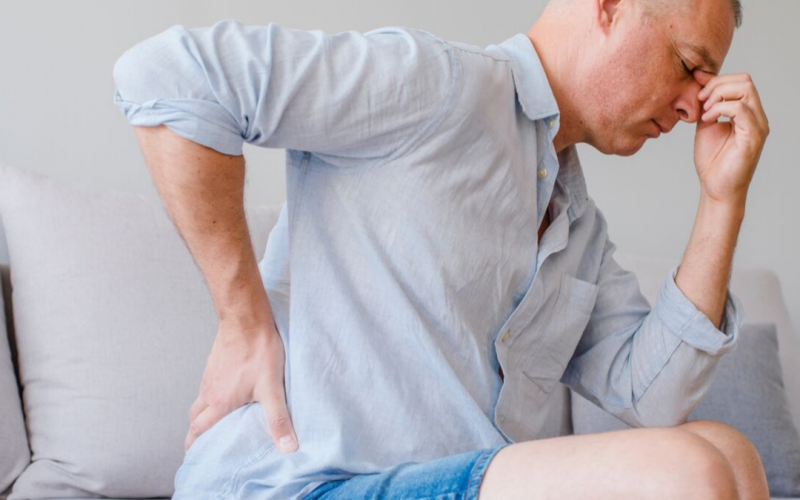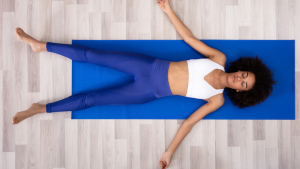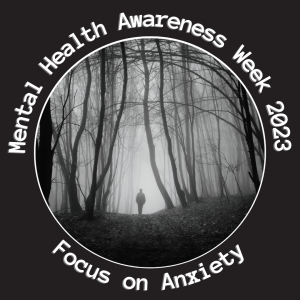Back pain is common; 80% of people worldwide will experience at least one episode. It’s an often invisible condition that can affect anyone from *children to the elderly, but worldwide, only around 1% of cases are because of something sinister such as a tumour.
The occasional backache or pain is a normal part of life, it tends to be short-lived and will often go away by itself with simple home remedies. However, millions of people worldwide have back pain that persists becoming a chronic problem or one that flares up repeatedly, usually for no apparent reason.
Back pain is the leading cause of disability in people under the age of 45, it’s complex in that many factors can cause it, and there are numerous myths and misconceptions about back pain. Education about back health and pain is crucial to preventing people from slipping into chronic states and essential for patients who have persistent episodes of back pain.
(*) All first episodes of back pain in children and teens under 18 years should always be checked by a doctor or other health professional.
Common myths and misconceptions about back pain
Poor posture will cause back pain.
If you have back pain, I suspect that someone will eventually tell you that your posture needs work. The way we hold our body and move it in space is called posture; it is not something inherent, but a cultural product of the environment in which people are raised and live, similar to language.
Poor posture is considered to be any self-imposed habituated positioning that causes physical discomfort or stress. Much of what is deemed to be “poor posture” results from adaption, and it is unlikely to improve without tremendous effort and a lot of work, with no guarantee of symptom reduction, so why would anyone bother?!
The more significant question to ask is how much posture matters? For example; is a woman with osteoporosis walking stooped over because of vertebral fractures displaying poor posture or an adaption because her kyphotic spine means it’s not possible and hurts to stand up straight.

Often missing in the discussion on back pain management is the difference between poor posture and postural stress. Postural stress is any challenge to the body outside of our habits; it’s remarkable how frequently people don’t notice postural stress, for example; dentists who are often stooped over patients performing treatments in an awkward one-sided position.
But whats does the science say? A systematic review in 2008 of over fifty studies found no reliable evidence of a correlation between posture and pain. While some saw an association, it is essential to remember that correlation does not equal causation.
It may be a surprise, but as an osteopath and pilates teacher I don’t recommend that people try to change their posture; Most don’t have the time or the will, and there are much more useful self-help strategies. Good posture is dynamic, so encouraging people to move more frequently and move more of themselves or exploring other ways to move are all super beneficial ways to feed our movement diet, “motion is lotion for our joints.”
I need to rest my bad back
Studies show that resting a “bad back” for over two days is not helpful. Prolonged rest and avoidance of activity lead to higher levels of pain, poorer recovery and extended absence from work.
Pain equals harm
Another outdated belief; modern back health management has looked at the science of pain and advocates that keeping active is the best way forward.
Moving will make my back pain worse
People often believe bending and lifting to be the causes of back pain, and while an injury can happen with awkward lifting, it’s usually a short-lived muscle strain. Most people think their spine is vulnerable and needs to be protected, but the truth is the human spine is robust and resilient, designed to bend and lift. Protecting or guarding your back can lead to hyper-vigilance, and the inability to relax spinal muscles.

Back problems run in my family, so I’m likely to be affected too.
There is no genetic predisposition to most back conditions, so parents can not pass their back problems onto their children.

I have back pain because one leg is shorter than the other.
Studies have found no association with low back pain and lower limb length unless it is over 20 mm; the average leg length difference is 5.2 mm. This seems to indicate that chronic back pain is unlikely to be part of a short-leg syndrome.

I need an MRI scan to diagnose my back problem.
Probably not, as most cases of back pain occur with no damage to spinal structures. Health professionals can assess and plan a successful treatment plan based on a thorough medical history and physical examination, so imaging rarely needed. It’s only when specific symptoms or there are red flag signs are present that an MRI scan or other imaging is required.
Did you know that MRI studies show that disc degeneration is prevalent in active pain-free people? These are signs of normal wear and tear that can lead to a high number of red herrings, which can cause fear avoidance and anxiety.
I need surgery to recover
Even persistent and chronic pain rarely requires an operation. Surgery should only be a consideration in the most severe cases when red flags symptoms are present.

Once a bad back, always a bad back
Back pain is common and widespread but in most cases, return to full health is possible with proper management and patient collaboration. If you have repeated episodes or live with chronic back pain, talk to a health professional because it is possible to find a solution.
I should avoid exercise
Research has shown that activity is beneficial for managing back pain and is also an effective strategy to prevent future episodes. Exercise is good for the back, and it doesn’t matter what you do, so choose something you will enjoy and be able to commit to regularly. Start gently, with 10 or 15 minutes sessions, build the time and intensity up slowly aiming for 30 minutes a day to gain the most health benefits.

Losing weight is the best prevention from back pain.
Back pain can affect anybody being overweight is only one factor that may contribute to back pain. Common risk factors for back pain include injury, being inactive, smoking, and stress.
Back pain in pregnancy is to be expected?
Reports of back pain in pregnancy range from 50% – 70%, it is not normal, nor should it be something women accept. Advice, treatment and corrective exercise can help and often prevents it in future pregnancies too.

My back pain must be psychological.
While psychological factors, such as stress, insomnia, and depression can accompany long-term back pain, it doesn’t mean the pain isn’t real. Back pain is an invisible condition, and in most cases, no specific structural cause will be identified. So people are often sent home with a diagnosed of ‘simple back pain’ or ‘non-specific back pain’. Frustrating if you are the patient seeking answers.
Regardless of the diagnosis (or lack of it), people with back pain should be treated holistically, which includes education about spine health and addressing any psychological factors. Research shows this will reduce the risk of additional stress and anxiety or exacerbating an underlying psychological problem.
There is a standard “cure” for back pain.
We humans are all different, back pain specialists will often have different approaches, so there are comparatively few standardised approaches to the diagnosis and treatment of back problems. However, there is more agreement amongst experts on the diagnosis and treatment of more severe and rare conditions such as spinal tumours or infections.
Summary: What’s the best treatment?
There isn’t one! Those who know that I am an osteopath may be surprised to read that, but the best treatment is the one that works best for you. Each person’s experience of back pain differs, and fortunately, as injury healing is in most cases complete within six weeks, most cases of back pain will clear up by themselves in that time frame.
Managing painful symptoms can be a challenge and frustrating but remaining active and continuing with usual activities is essential to recovery. Numerous studies and clinical experience show that people achieve the best results with a multi-factorial approach; a holistic mind-body treatment plan of patient advice, short-term pain medication, movement and exercise prescriptions, and hands-on treatment such as osteopathy.







